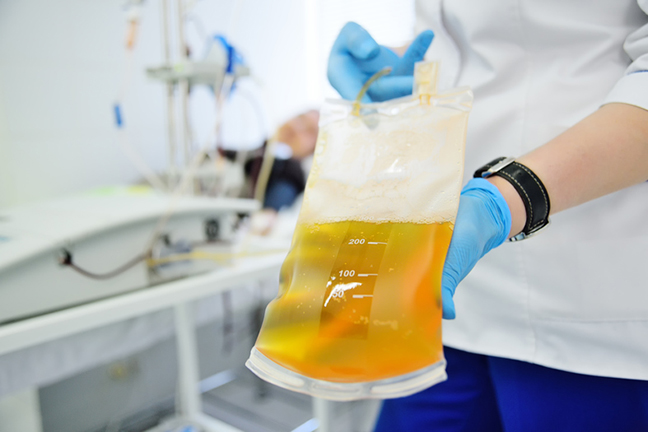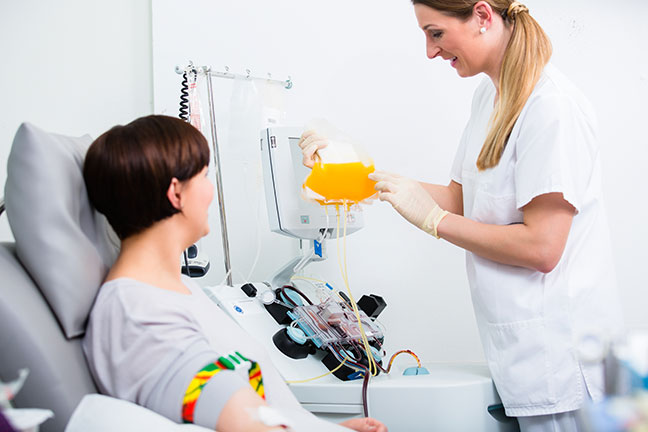Plasma is the liquid portion of blood and serves several critical roles in keeping you healthy. It transports materials throughout your body and contains key nutrients. About 55% of our blood is plasma, and the remaining 45% are red blood cells, white blood cells and platelets that are suspended in the plasma. Over 90% of plasma is water, with the remaining comprised of vital proteins such as albumin, gamma globulin and anti-hemophilic factor, as well as mineral salts, sugars, fats, hormones and vitamins.
Plasma serves four important functions in our body:
- Helps maintain blood pressure and volume.
- Supply critical proteins for blood clotting and immunity.
- Carries electrolytes such as sodium and potassium to our muscles.
- Helps to maintain a proper pH balance in the body, which supports cell function.


Uses for Plasma
Plasma is commonly given to trauma, burn and shock patients, as well as people with severe liver disease or multiple clotting factor deficiencies. It helps boost the patient’s blood volume, which can prevent shock, and helps with blood clotting. Plasma can also be used to make treatments for conditions such as immune deficiencies and bleeding disorders or in an emergent trauma situation.
Blood plasma contains properties that help people with a variety of medical needs. People with genetic disorders, such as hemophilia, must regularly receive blood plasma to stay healthy. Other patients who undergo surgery or other traumatic medical episodes also need plasma transfusions to stave off infection, speed the body’s healing and promote blood clotting.
Compatible Blood Components for Transfusion
The following table, defined by type of component, show the appropriate donor unit ABO Group and Rh Type that will be compatible with the patient/recipient:
| Recipient’s ABO Group | Component ABO Group |
|---|---|
| O | O, A, B, OR AB |
| A | A OR AB |
| B | B OR AB |
| AB | AB |
For more information about our products, for example the AABB Technical Manual and the Circular of Information for Blood and Blood Components visit the AABB website.



